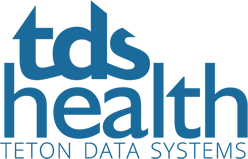Practical Measurement for Health Care Improvement

Description
Written by experienced practitioners and teachers of health care improvement, Practical Measurement for Health Care Improvement guides the busy health care professional through analyzing data in real-time for those who need and use data. It is developed to help steer individuals through the processes of making and communicating improvements in the healthcare settings in which they work. This book is intended for novice and intermediate-level improvers in all health professions--especially students--and uses a sound educational approach to quantitative analyses that does not require rigorous academic study in statistics.
For instructors, Practical Measurement for Health Care Improvement can be used as a standalone textbook or as a companion book to Fundamentals of Health Care Improvement: A Guide to Improving Your Patients Care, 4th edition, co-published by Joint Commission Resources with the Institute for Healthcare Improvement.
As a standalone, this book is technically rigorous, yet persistently pragmatic for the teachers, practitioners, and students seeking a plain-language approach to using data and statistical methods to help inform improvement decision-making. As a companion, this book augments the foundational measurement concepts in Fundamentals of Health Care Improvement by taking a deep dive into measurement methodology for improving health care.
Practical Measurement for Health Care Improvement follows a two-phase model for practical measurement referred to as the Hourglass Model. This measurement model is described in detail and is presented in this book as the framework for practical measurement. The Hourglass Model reminds improvers to apply key steps to measurement and illustrates how those steps are aligned, connected, and sequenced. Other key topics and features in this book include the following:
Key Topics
- • Exploring measurement challenges faced by health care professionals
- • Understanding the problem, the context, and rationale for improvement work
- • Developing measurement definitions
- • Refining the data collection plan
- • Analyzing and visualizing data
- • Using statistical process control (SPC) charts for continuous and attribute data
- • Using SPC charts for rare and infrequent events
- • Disseminating improvement results
- • Exploring advanced SPC methods
Key Features
- • Chapter objectives to assess learning
- • Scenarios that illustrate measurement challenges encountered in clinical settings
- • Supplemental sidebars that offer technical information, additional resources, and advanced content
- • Take home points that summarize learning concepts addressed in each chapter











































